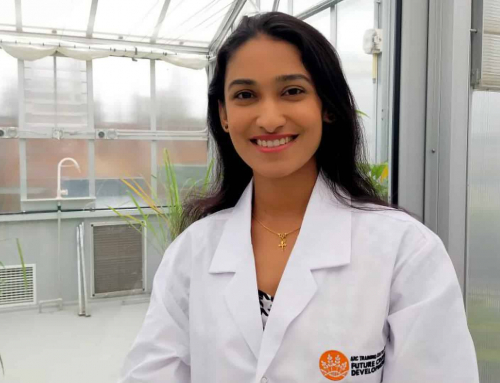The Australian Plant Phenomics Facility (APPF) knows no bounds, developing new technologies to ensure that the facility remains at the international forefront of plant science.
We can capture an image of a plant with ease, but how many megapixels does it take to image a forest? Dr Tim Brown would tell you it is 780 megapixels.
Tim and Prof Justin Borevitz from the APPF’s node at ANU have developed a “Gigavision” camera that takes hourly panoramic images made up of 200 x 18MP DSLR photos to create a 780 megapixel image of the forest.
What can a researcher do with this massive image you might ask? The resolution of the image allows researchers to track daily, seasonal and diurnal variation (plant behaviours) in the forest, tree and even leaf levels for thousands of trees in each forest.
Sensing and monitoring tools the APPF is developing at the research forest can be applied to other field ecosystems, such as commercial forests and national parks. Other tools include a pipeline to convert drone flight information into 3D models. APPF staff are available to help individual researchers or research groups set up these field tools at their own field sites.
The ANU research forest at the arboretum is available to national and international researchers for their own field experiments in a unique environment. All data is available for research use upon request.
For more information contact Tim Brown.
More reading: Using phenocams to monitor our changing Earth: toward a global phenocam network (PDF) and High resolution, time-lapse imaging for ecosystem-scale phenotyping.
(Image: The first image of the Arboretum Forest, Canberra. Try it yourself here: https://traitcapture.org/gigapixels/by-id/58a3c186f7f5662afb647ef6. Go to the link and click on any tree within the image and zoom in to see the individual leaves on every tree.)






